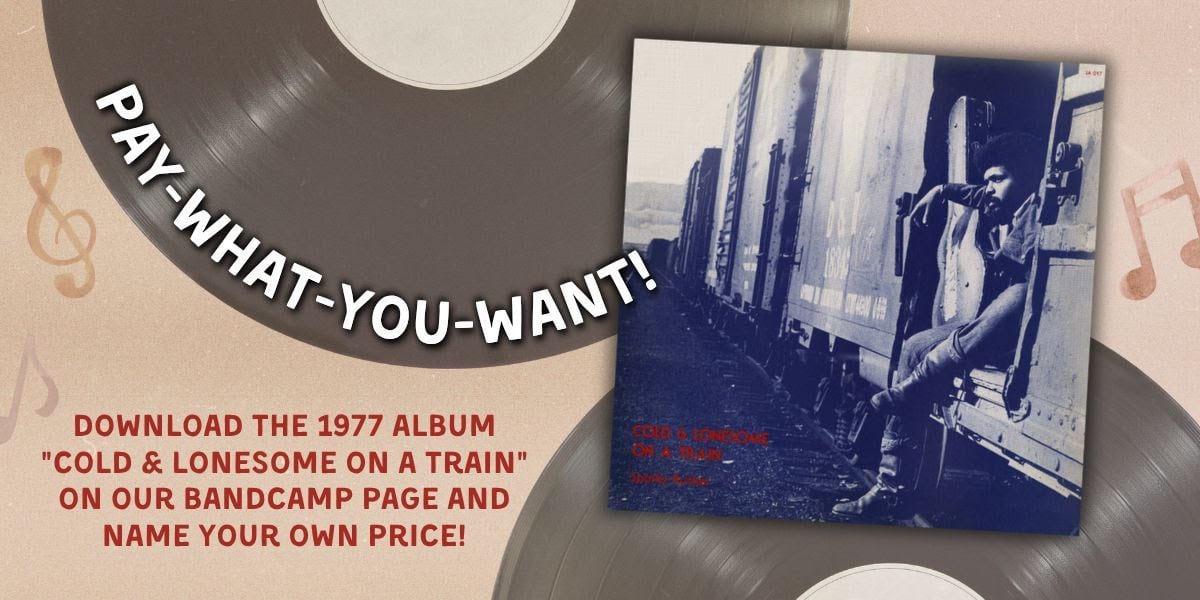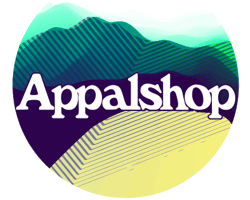Over the Summer, Appalshop Filmmaker Madison Buchanan worked on the set of Ruby Road, the new feature film from Writer/Director Talia Lugacy (This is Not a War Story), as part of a collaboration between Lugacy and Appalshop. In this interview, Madison discusses her experience, highlights what surprised her about working on a film crew, and shares how her background as a graduate and educator in the AMI’s Summer Documentary Institute became a springboard into a vital role on a feature film set.

Can you tell me about the project you’ve been working on?
Madison: I’ve been working on a feature film production with a company out of New York. The film’s title is Ruby Road. It was a six-week film production. We worked with several actors, union and non-union. Anyone could be a part of the film, and we would find a way to include them. The production team came down to Eastern Kentucky to film and reached out to Appalshop for guidance, with interest in collaborating.
How did this partnership come about?
Madison: Talia Lugacy, the writer and director, reached out to Appalshop. She initially got in touch after visiting the Appalachian Media Institute (AMI) in the summer of 2024. She met with our Summer Documentary Institute interns and screened one of her films, This is Not a War Story. She’d been in talks with Willa, the former Appalshop Films Director—who brought (fellow Appalshop Filmmaker) Nik Lee and me in for a discussion. We met and discussed Talia’s upcoming project. She was pitching it but also wanted feedback to ensure it was authentic, realistic, and felt like a true representation of the region. Nik and I maintained the relationship with her, and we brought three AMI interns into the project as well, meeting with Talia every week for nearly a year until the production began. The meetings covered everything—pre-production, planning, scouting, researching, rereading scripts, everything.
What was your role? What did the day-to-day look like?
Madison: Originally, we were advisors, and didn’t have full titles until a few months before the production. I was Second Assistant Director—that was to be my title on-set. But a month before production, Talia called and said she wanted me in a bigger capacity and needed more support. She offered me the role of Unit Production Manager. She acknowledged that it was a big role, and that I’d never done anything like it before. She needed someone who was local, available, and knew the film well, and she wanted me in the role. I handled the production side of things, the paperwork, the SAG stuff, timesheets. I made the call sheet every night, which was one of the bigger things I had to do. You have to send the call sheet out within three hours of wrap. Sometimes we’d finish at 2 AM, and I’d have to send out the call sheet by 5 AM, and then be back on set by 9. I helped the field producer with safety logistics, location scouting, and finding backups when people or locations would fall through.
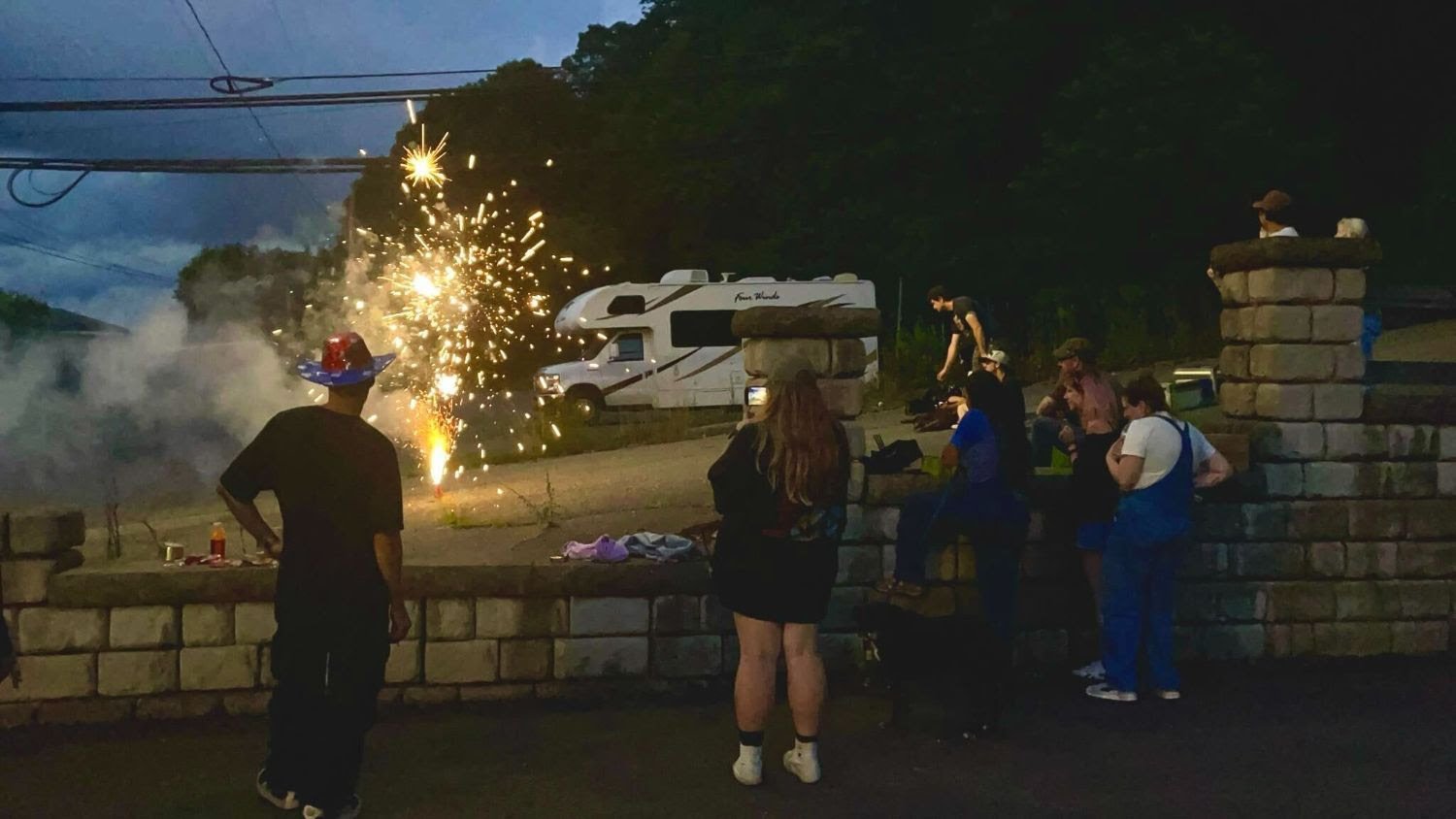
What was your day-to-day like on set?
Madison: We woke up early every day. The rest of the crew were all based over Pine Mountain. I’d get up and drive myself and the interns over the mountain to meet them on set in Cumberland. It was about an hour of prep before we started shooting each day. I’d have to find parking so cars wouldn’t be in the shot. Given the number of people, it was a lot of cars. And we were typically in a little holler every day. I’d set up the “crafty table”—which was basically snacks, food, and drinks. If it wasn’t set up, people would riot! And there were lots of dietary restrictions, etc, so you had to work to accommodate. We’d do blocking rehearsals—my job was less involved with the actual shooting. It was more about getting to the shooting stage efficiently, making sure people knew what was going on, and handling problems. It was problem solving, putting out fires, handling personalities, dealing with a lot of people. Talia wanted people from the area to be involved with the film, so we had lots of folks who had never acted before. We handled the food, made sure everybody was fed. We’d help wrap after hours of shooting, make sure everything was put in its right place, take inventory, and go home. And then I’d make the call sheet to figure out exactly where we’d be the next day, what time we’d need to be there, what scenes we were shooting, and a description of all the scenes so prop masters knew what props to bring. If we moved to multiple locations in one day, I’d have to include that. The whole thing is a detailed description of the next day, it even includes the weather, the nearest hospital—anything that might be relevant would be on the call sheet.
What surprised you most about working on a feature film?
Madison: It was such an adjustment. The first week was a shock. Five days a week, ten hours a day, but that didn’t include travel, set up or wrapping, so it was usually closer to twelve hours. It was right in the summer—beginning in June into the end of July. They were hot days. I knew it would be hard work, but I didn’t know just how hard it was. It’s physical labor, even though I was on the production team, it was very physical. We were running up and down hollers in the sun. I was sunburnt every day. It didn’t matter how much sunscreen you put on. We’d be so tired and wore out. The first week was the hardest—we hadn’t learned to drink enough water, or eat enough to have energy to get through the day. I don’t typically eat breakfast, but you can’t do that on set. You won’t make it through the day. You have to eat, drink water, stay out of the heat as long as you can while finishing your responsibilities. You have to take care of yourself, and the crew. Many folks would forfeit their own health if they had something to do—it was the production team’s job to ensure that people weren’t doing that, and that they were taking care of themselves. Many folks weren’t expecting it to be so hot or humid, so there were several times that other people in the crew would get heat exhaustion, and we’d need to make sure they were alright. That was one of our main focuses—health and safety.
Every little thing is meticulously planned out, and then things fall through, and you scurry to find a replacement or backup—a character, a location—and you’re on a set timeline. We’d have to push scenes for a variety of reasons, whether we ran out of time, or we needed to do reshoots. I started working on weekends to try to help reorient the schedule so we could finish everything. It was a 6 week shoot—4 1/2 in Kentucky, and then a week and a half in PA.
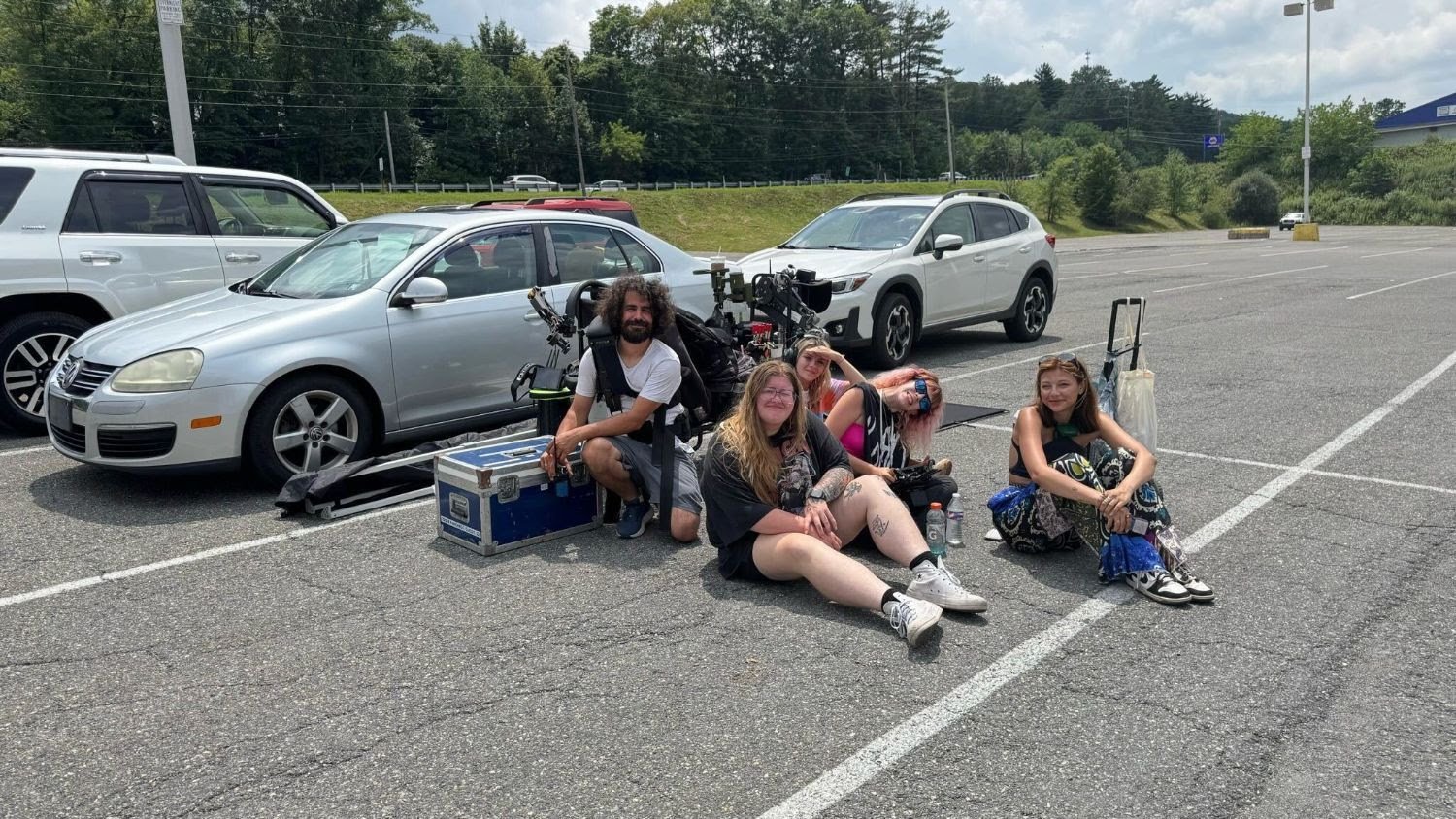
Let’s talk about filming in Pennsylvania–What was that like? Was filming there different to Kentucky?
Madison: It was definitely different. Suddenly, my job was the same, but more difficult because I’d never been to Pennsylvania. None of us had been that far north at all. A big part of the movie is that if you’re in the Appalachian mountains, anywhere in the range, it’s very similar. They’d say “it’s very similar,” and I was skeptical, but it is. When I saw it, I got it. It’s very similar to home. The people were still approachable. We still went on location scouts, but I was driving around or traveling around on Google Street View. In Kentucky, they’d describe a hyper-specific location, like an abandoned parking lot with a highway behind it, and I’d be able to name a place immediately. In Pennsylvania, I’d have to find something. It was a big shift. Robyn, a member of the production team, had scouted Pennsylvania. We worked very closely—our jobs were very similar. When I came up [to Pennsylvania], she took the lead on locations, and I took on a deeper role everywhere else, and supported her when she needed help with locations, if we needed to find a replacement. A lot of that crew had never been to that part of Pennsylvania, so we all felt a bit like strangers there. It was still a small town, coal town, but we were bumbling around. It was cool.
Where did you spend most of your time in Pennsylvania?
Madison: We were based in Lansford—which is so much like Lynch, Kentucky, where we did a lot of shooting. The sign coming in said “Everybody’s goal is mine more coal.” It was a small town, mostly houses, that looked very similar to the coal camp houses in Lynch. It had a coal museum, everybody was friendly, there was a mine tour where you could go into the mines. It was less mountain [than Kentucky], and more hilly, and the people sounded like they were from New Jersey.
Do you have a favorite memory of your time working on set?
Madison: The night when we got to watch the edit. All of us, the entire crew, cast, it was a big get-together. Luigi, who is our First Assistant Camera (he’s from the Alps and said Kentucky reminded him of home), made authentic lasagna for everybody. We had a big cookout with fireworks, and it was right after the 4th of July parade scene, which is a very intense scene. There were times when it would get really stressful. Issues would arise, tensions could get high, but we were all in it together. There were definitely times when it was hard—and the parade was a hard day. A rewarding day, but a difficult day. Afterward, we got together, and Ryan, our Director of Photography, edited an eleven-minute compilation of the footage we’d shot so far. Most of the crew hadn’t seen it—we were hanging out, not thinking about work, and we watched the edit. All of the stress melted away—we were all together, we all felt like “we made this together” and it was just nice. The First Assistant Director Nick Shadix gave a speech about how important we all were to the process, and we hung out, played cards, and the gathering and camaraderie was amazing. It was hard, and we were stressed, but we made something really cool, and it was nice to unwind together. We’ll always have the bond of making this thing together.
Can you talk about the 4th of July Parade scene? Did you have to stage an entire parade?
Madison: No, we were in the actual 4th of July parade. Our Art Department made two floats, and everyone [in town] knew there was a film crew, so there was a huge crowd. Everybody was lining up for the parade. I showed up early and was taking some crew to the endpoint of the parade. I couldn’t find them—I was looking all over for them. There was this little old man in his 4th of July get-up, and he said, “Are you looking for your film crew?” And I said, “Yeah, how’d you know?” Everybody there knew that we were filming, which made us excited. We filmed the actual parade. It was several miles, and we walked. The Director of Photography walked and filmed, and we’d get on the floats and off the floats. The main prop was our school bus—the main character lives in it, it’s a road trip movie. When the parade ended, we knew we couldn’t ask or make any sort of request of people redoing the parade. So when it ended, we stayed, took our floats, and staged a fake parade. Then, we did another day of staged parade with our floats in a different place.
What was the most valuable thing you gained from this experience? What are you most grateful for?
Madison: I’m grateful for so much. It was so wonderful to work with this crew who all were extremely talented—they’ve all been in the industry and worked on really prestigious projects. Our First Assistant Camera casually mentioned meeting Pedro Pascal. It was fun to work with these people who were so professional, had so much experience. It was a low-budget indie film, and it was filmed in Kentucky, our home; the crew respected our opinions a lot, and we got closer to the filmmaking experience than many folks do. We were close to the film department, camera department, costumes, audio—we got to learn so much. It was well-rounded; there was a chaotic nature to it, we definitely learned by watching, but we got to be close to everything. After shoots, we could ask questions, but we weren’t treated like students—we were treated like part of the team that had jobs to do. We helped with casting, we helped find one of the main characters—a local woman, ninety years old, who had never acted or been on a set before. She acted and played a main role.
We learned so much about movie sets. When we first saw some of our footage, it put into perspective what we were doing, and how we were actually making something visually beautiful and important, as far as the story and representing the region. We got to work with Frances Fisher, and other actors who are well-known and have worked on multimillion dollar films. They came and worked with this small indie film, the holding area was a little RV and I was the only one who could get the AC to work. The whole thing was rewarding. Before we’d been on set, we felt like we didn’t know anything, and now we feel like we can go on any set and know what’s going on—it might be a bigger scale, but we’d get the gist of it.
Ruby Road is targeting a 2026 premiere date. We will share the trailer and more release details as they are announced.
More on Madison
Madison Buchanan is a documentary filmmaker from Eastern Kentucky. After years of studying media production at Appalshop and Morehead State University, she graduated and was hired as a full-time filmmaker at Appalshop. With her talents, platform, and love of storytelling, she seeks to amplify the voices of her community that often go unheard. Due to experiences that shaped her life when she was younger, she often focuses on topics of houselessness, addiction/recovery, and incarceration; and how these topics are often misunderstood and misrepresented. One of her current projects is The Roof Over My Head, a documentary detailing the reality of being unhoused in Appalachia; and what people have to do to survive.
Madison has also begun working within the narrative film industry, using her knowledge as a local and as a documentarian to consult and support filmmakers who are writing stories based in Appalachia. Through this work, she hopes to help convey a realistic and honest portrayal of our region on the big screen, challenging the stereotypes that people generally associate with Appalachia. Madison believes that in order to create meaningful change in how our home is both viewed and treated, Appalachian people must have a seat at the table and a say in the narrative. Her most recent release is the Appalshop short film The Roof Over My Head.
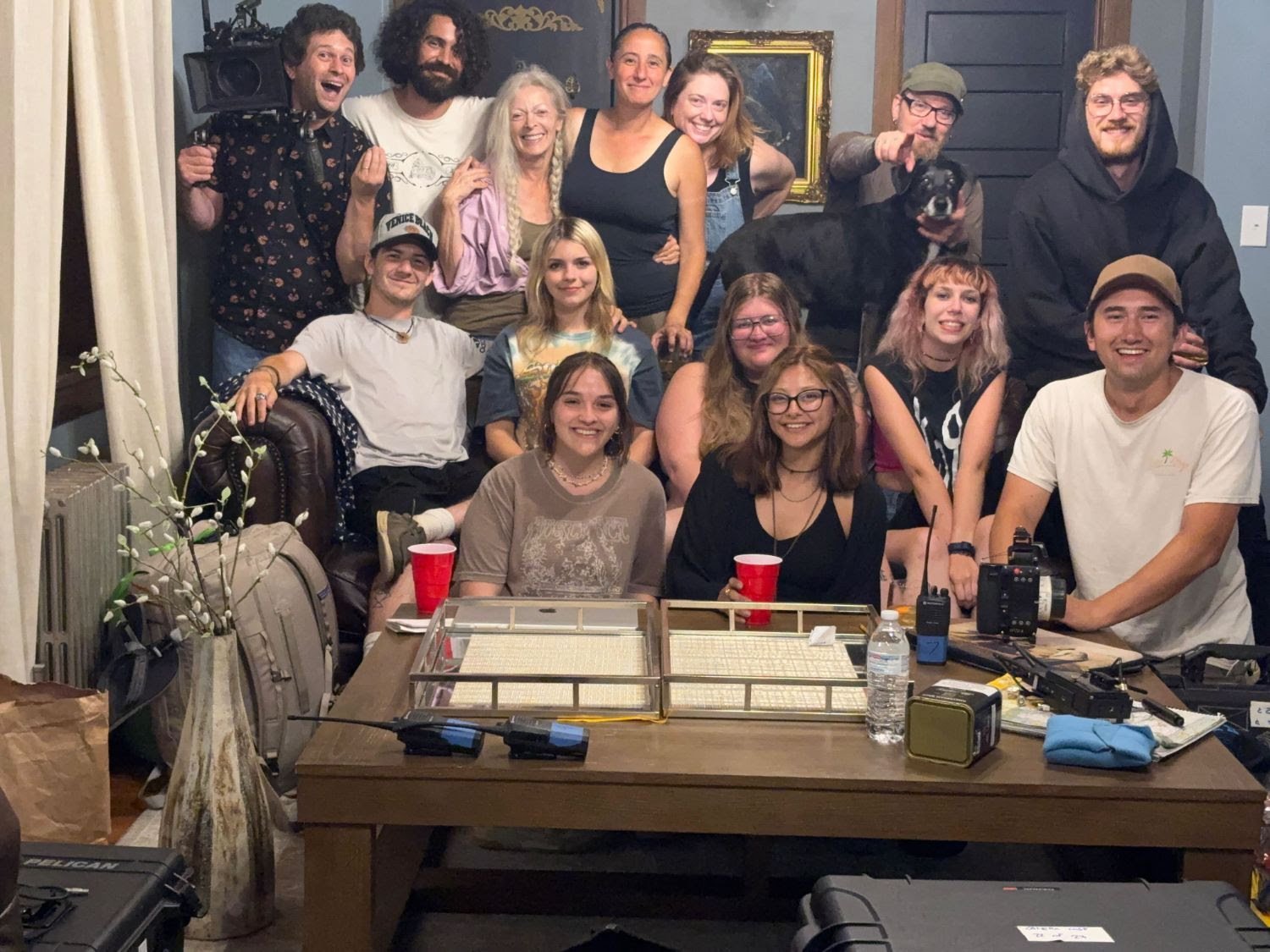
The Red Fox Storytelling Festival is nearly here!
Join us October 24 and 25 for the annual Red Fox Storytelling Festival! This FREE event will be held in Pound, VA, and will include lots of family fun, including:
![]() Community film screenings of Appalshop films “Justice in the Coalfields” and “Fast Food Women”
Community film screenings of Appalshop films “Justice in the Coalfields” and “Fast Food Women”
![]() Chasin’ Red Fox 5K race
Chasin’ Red Fox 5K race
![]() Wonderful stories and histories shared by regional storytellers
Wonderful stories and histories shared by regional storytellers
![]() Music by Strawberry Jam and Madison Denhard
Music by Strawberry Jam and Madison Denhard
![]() Good food, good friends, and good memories!
Good food, good friends, and good memories!
This event is a collaboration between the Town of Pound Tourism Committee, The Historical Society of the Pound, and Appalshop. We hope to see you there!
October’s Pay-What-You-Want Album
A new month means a new Pay-What-You-Want album from the June Appal Recordings catalog! This month, we’re showcasing another great album for the fall season; Sparky Rucker’s Cold & Lonesome on a Train.
James “Sparky” Rucker has been singing songs and telling stories from the American tradition for over forty years. During his career as a folksinger and social activist, he has been on the boards of Sing Out! magazine, the John Henry Memorial Foundation, and the Southern Folk Cultural Revival Project. He lives in Knoxville, Tennessee, with his wife, musician Rhonda Rucker, with whom he has performed throughout the U.S.
Stream or download the album (for any price you want!) on June Appal’s Bandcamp page.
